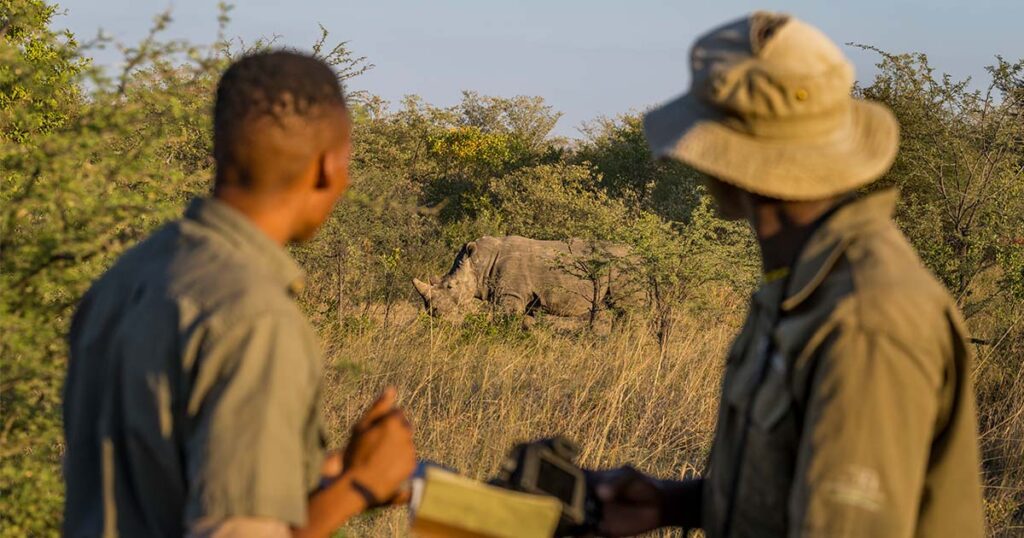How Rhino Conservation Benefits Local Communities

Rhinos, magnificent and massive, play a more significant role in their habitat than many might imagine. Beyond their iconic status in the animal kingdom, rhinos are pivotal to environmental health and can play a key part in the socio-economic stability of the communities living near their habitats. Rhino Conservation has multiple positive impacts for local human populations, further emphasizing why protecting and conserving rhinos and their habitats goes beyond mere wildlife preservation.
Environmental Benefits
Biodiversity Maintenance: Rhinos are umbrella species, meaning their conservation helps protect many other species within the same ecosystem. Their presence helps maintain the balance of the ecosystems where they live, which is crucial for the overall health of local habitats.
Seed Dispersion: Rhinos contribute to the ecological dynamics of their habitats through their feeding habits. By consuming large quantities of vegetation and dispersing seeds in their dung, they play a critical role in shaping and maintaining local flora. This seed dispersion supports forest regeneration and health, which is vital for local flora and fauna.

Economic Benefits
Employment: Rhino conservation areas are often significant tourist attractions, drawing visitors from around the world. This influx of tourists boosts local economies by creating jobs and generating income for communities. Jobs range from guiding and hospitality to key conservation roles such as rhino monitoring and removal of invasive plant species for crafts and other alternative livelihoods that benefit both the local community and rhinos as well as other wildlife.
Sustainable Practices: By promoting rhino conservation, we also encourage sustainable land use practices that benefit agricultural productivity. The preservation of natural ecosystems can enhance soil health and stability, reducing erosion and improving water quality, which directly benefits agricultural activities and food security for local communities.
Social Benefits
Education and Awareness: Conservation efforts include educational programs for local communities, which increase awareness about environmental issues and the importance of biodiversity. These programs empower locals, especially youth, by providing knowledge and skills related to conservation and ecological management.
Community Cohesion: Often, conservation efforts require coordinated actions and cooperation among community members, fostering a sense of unity and shared purpose. This can strengthen community ties and promote a harmonious relationship with nature and its wildlife.

Cultural Benefits
Preserving Heritage: For many indigenous and local communities, rhinos are significant culturally. Conservation helps preserve these cultural ties by maintaining the populations of these animals, which are often featured in local folklore, rituals and traditions.
Community Identity and Pride: Protecting rhinos helps build a sense of pride and identity within communities. Locals become stewards of wildlife conservation, enhancing their sense of responsibility and pride in their natural heritage.
Conclusion
The preservation of rhinos brings a wealth of benefits to local communities that share their habitat. One of IRF’s key focal areas is engaging people. Our work reinforces the idea that protecting and conserving rhinos is about preserving a whole ecosystem, which includes the human communities that depend on it.
Through ongoing education, sustainable practices, and community engagement, we are making a tangible difference, ensuring that the benefits of rhino conservation reach all corners of the communities involved. Join us in our mission to protect these magnificent animals and the countless lives they touch.
